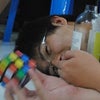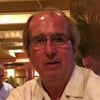Big Ben is the nickname for the great bell of the clock at the north-eastern end of the Palace of Westminster in London. The nickname is often also used to refer to the clock and the clock tower. This is the world's largest four-faced, chiming clock and the third largest free-standing clock tower in the world. It celebrated its 150th birthday in 2009.
The tower was raised as a part of Charles Barry's design for a new palace, after the old Palace of Westminster was destroyed by fire on the night of 22 October 1834.
The new Parliament was built in a Neo-gothic style. Although Barry was the chief architect of the Palace, he turned to Augustus Pugin for the design of the clock tower, which resembles earlier Pugin designs, including one for Scarisbrick Hall. The design for the Clock Tower was Pugin's last design before his final descent into madness and death, and Pugin himself wrote, at the time of Barry's last visit to him to collect the drawings: "I never worked so hard in my life for Mr Barry for tomorrow I render all the designs for finishing his bell tower & it is beautiful." The tower is designed in Pugin's celebrated Gothic Revival style, and is Шаблон:M to ft high.
The bottom Шаблон:Convert of the Clock Tower's structure consists of brickwork with sand coloured Anston limestone cladding. The remainder of the tower's height is a framed spire of cast iron. The tower is founded on a Шаблон:Convert square raft, made of Шаблон:Convert thick concrete, at a depth of Шаблон:Convert below ground level. The four clock faces are Шаблон:Convert above ground. The interior volume of the tower is 4,650 cubic metres (164,200 cubic feet).
Because of changes in ground conditions since construction (notably tunnelling for the Jubilee Line extension), the tower leans slightly to the north-west, by roughly 220 millimetres (8.66 in) at the clock face, giving an inclination of approximately 1/250. Due to thermal effects it oscillates annually by a few millimetres east and west.
The clock faces are large enough to have once allowed the Clock Tower to be the largest four-faced clock in the world, but have since been outdone by the Allen-Bradley Clock Tower in Milwaukee, Wisconsin. However, the builders of the Allen-Bradley Clock Tower did not add chimes to the clock, so the Great Clock of Westminster still holds the title of the "world's largest four-faced chiming clock".
The clock and dials were designed by Augustus Pugin. The clock faces are set in an iron frame Шаблон:Convert in diameter, supporting 312 pieces of opal glass, rather like a stained-glass window. Some of the glass pieces may be removed for inspection of the hands. The surround of the dials is gilded. At the base of each clock face in gilt letters is the Latin inscription DOMINE SALVAM FAC REGINAM NOSTRAM VICTORIAM PRIMAM, which means O Lord, keep safe our Queen Victoria the First.
The clock is famous for its reliability. The designers were the lawyer and amateur horologist Edmund Beckett Denison, and George Airy, the Astronomer Royal. Construction was entrusted to clockmaker Edward John Dent, who completed the work in 1854. As the Tower was not complete until 1859, Denison had time to experiment: Instead of using the deadbeat escapement and remontoire as originally designed, Denison invented the double three-legged gravity escapement. This escapement provides the best separation between pendulum and clock mechanism. The pendulum is installed within an enclosed windproof box sunk beneath the clockroom. It is 3.9m long, weighs 300 kg and beats every 2 seconds. The clockwork mechanism in a room below weighs 5 tons.
The idiom of putting a penny on, with the meaning of slowing down, sprang from the method of fine-tuning the clock's pendulum. On top of the pendulum is a small stack of old penny coins; these are to adjust the time of the clock. Adding or subtracting coins has the effect of minutely altering the position of the pendulum's centre of mass, the effective length of the pendulum rod and hence the rate at which the pendulum swings. Adding or removing a penny will change the clock's speed by 0.4 second per day.
During The Blitz, the Palace of Westminster was hit by German bombing, on 10 May 1941, a bombing raid damaged two of the clockfaces and sections of the tower's stepped roof and destroyed the House of Commons chamber. Architect Sir Giles Gilbert Scott designed a new five-floor block. Two floors are occupied by the current chamber which was used for the first time on 26 October 1950. Despite the heavy bombing the clock ran accurately and chimed throughout the Blitz.
2007]]
The main bell, officially known as the Great Bell, is the largest bell in the tower and part of the Great Clock of Westminster. The bell is better known by the nickname Big Ben.
The original bell was a 16.3-tonne (16 ton) hour bell, cast on 6 August 1856 in Stockton-on-Tees by John Warner & Sons. The bell was never officially named, but the legend on it records that the commissioner of works, Sir Benjamin Hall, was responsible for the order. Another theory for the origin of the name is that the bell may have been named after a contemporary heavyweight boxer Benjamin Caunt. It is thought that the bell was originally to be called Victoria or Royal Victoria in honour of Queen Victoria, but that an MP suggested the nickname during a Parliamentary debate; the comment is not recorded in Hansard.
Since the tower was not yet finished, the bell was mounted in New Palace Yard. Cast in 1856, the first bell was transported to the tower on a trolley drawn by sixteen horses, with crowds cheering its progress. Unfortunately, it cracked beyond repair while being tested and a replacement had to be made. The bell was recast at the Whitechapel Bell Foundry as a 13.76-tonne (13½ ton) bell. This was pulled 200ft up to the Clock Tower’s belfry, a feat that took 18 hours. It is 2.2 metres tall and 2.9 metres wide. This new bell first chimed in July 1859. In September it too cracked under the hammer, a mere two months after it officially went into service. According to the foundry's manager, George Mears, Denison had used a hammer more than twice the maximum weight specified. For three years Big Ben was taken out of commission and the hours were struck on the lowest of the quarter bells until it was reinstalled. To make the repair, a square piece of metal was chipped out from the rim around the crack, and the bell given an eighth of a turn so the new hammer struck in a different place. Big Ben has chimed with an odd twang ever since and is still in use today complete with the crack. At the time of its casting, Big Ben was the largest bell in the British Isles until "Great Paul", a 17 tonne (16¾ ton) bell currently hung in St. Paul's Cathedral, was cast in 1881.
and the 12 strikes of Big Ben as broadcast at exactly 00:00:00 GMT on 1 January, 2009.]] Along with the Great Bell, the belfry houses four quarter bells which play the Westminster Quarters on the quarter hours. The four quarter bells are G sharp, F sharp, E, and B (see Note). They were cast by John Warner & Sons at their Crescent Foundry in 1857 (G sharp, F sharp and B) and 1858 (E). The Foundry was in Jewin Crescent, in what is now known as The Barbican, in the City of London.
The Quarter Bells play a 20-chime sequence, 1–4 at quarter past, 5–12 at half past, 13–20 and 1–4 at quarter to, and 5–20 on the hour (which sounds 25 seconds before the main bell tolls the hour). Because the low bell (B) is struck twice in quick succession, there is not enough time to pull a hammer back, and it is supplied with two wrench hammers on opposite sides of the bell. The tune is that of the Cambridge Chimes, first used for the chimes of Great St Mary's church, Cambridge, and supposedly a variation, attributed to William Crotch, on a phrase from Handel's Messiah. The notional words of the chime, again derived from Great St Mary's and in turn an allusion to Psalm 37, are: "All through this hour/Lord be my guide/And by Thy power/No foot shall slide". They are written on a plaque on the wall of the clock room.Шаблон:ListenШаблон:Clear
The nickname Big Ben is the subject of some debate. The nickname was applied first to the Great Bell; it may have been named after Sir Benjamin Hall, who oversaw the installation of the Great Bell, or after boxing's English Heavyweight Champion Benjamin Caunt. Now Big Ben is used to refer to the clock, the tower and the bell collectively, although the nickname is not universally accepted as referring to the clock and tower. Some authors of works about the tower, clock and bell sidestep the issue by using the words Big Ben first in the title, then going on to clarify that the subject of the book is the clock and tower as well as the bell.
The clock has become a symbol of the United Kingdom and London, particularly in the visual media. When a television or film-maker wishes to indicate a generic location in Britain, a popular way to do so is to show an image of the Clock Tower, often with ared double-decker bus or black cab in the foreground. The sound of the clock chiming has also been used this way in audio media, but as the Westminster Quarters are heard from other clocks and other devices, the unique nature of this sound has been considerably diluted.
The Clock Tower is a focus of New Year celebrations in the United Kingdom, with radio and TV stations tuning to its chimes to welcome the start of the year. Similarly, on Remembrance Day, the chimes of Big Ben are broadcast to mark the 11th hour of the 11th day of the 11th month and the start of two minutes' silence.
ITN's News at Ten opening sequence features an image of the Clock Tower with the sound of Big Ben's chimes punctuating the announcement of the news headlines, and has done so on and off for the last 41 years. The Big Ben chimes continue to be used during the headlines and all ITV News bulletins use a graphic based on the Westminster clock face. Big Ben can also be heard striking the hour before some news bulletins on BBC Radio 4 (6 pm and midnight, plus 10 pm on Sundays) and the BBC World Service, a practice that began on 31 December 1923. The sound of the chimes are sent in real time from a microphone permanently installed in the tower and connected by line to Broadcasting House.
Londoners who live an appropriate distance from the Clock Tower and Big Ben can, by means of listening to the chimes both live and on the radio or television, hear the bell strike thirteen times on New Year's Eve. This is possible due to what amounts to a offset between live and electronically transmitted chimes since the speed of sound is a lot slower than the speed of radio waves. Guests are invited to count the chimes aloud as the radio is gradually turned down.
The Clock Tower has appeared in many films, most notably in the 1978 version of The Thirty-Nine Steps, in which the hero Richard Hannay attempted to halt the clock's progress (to prevent a linked bomb detonating) by hanging from the minute hand of its western face. It was also used in the filming of Shanghai Knights starring Jackie Chan and Owen Wilson, and was depicted as being partially destroyed in the Doctor Who episode "Aliens of London". An animated version of the clock and its inner workings were also used as the setting for the climactic final battle between Basil of Baker Street and his nemesis Ratigan in the Walt Disney animated film The Great Mouse Detective, and is shown being destroyed by a UFO in the film Mars Attacks!.
A survey of 2,000 people found that the tower was the most popular landmark in the United Kingdom.
Big Ben was polled as the Most Iconic London Film Location.





